Boston United vs Notts County. 22.07.23
Joe Marshall- @joemarshall_
When a club moves into a new ground, there is always a sense of anticipation about how their new home may stack up compared to their old one. This was particularly the case when Boston United revealed their plans for a new stadium a few years ago. The Pilgrims’ old York Street Stadium was one of the most popular and revered grounds among the non-league community, so there were naturally many skeptics when it was announced that they would be moving out into a new, modern facility on the outskirts of the town.
York Street was the first football stadium I ever visited, so over the years, after plenty of grounds were ticked off and I began to approach my 100th, I knew I had to go back to where it started and check out the Jakemans Community Stadium in order to complete my first footballing century.
Jakemans Community Stadium
Boston United closed an 87 year chapter of their history when they left their York Street home at the end of the 2019/20 season, and moved into a new 5000 capacity stadium around 2 miles outside of town in nearby Wyberton. The Jakemans Community Stadium was constructed as part of the ‘Quadrant’ development which includes hundreds of new homes and several food and drink outlets.
Getting to the ground is fairly simple via car. Although parking at the stadium itself is limited and reserved, nearby streets are plentiful and are therefore the best option for those driving. Accessing the stadium via public transport is slightly trickier, trains to Boston town centre only get you so far, as a shuttle bus is required to get you to the Wyberton location.
Objectively speaking, the Jakemans Community Stadium is a brilliant facility. On approach, the first thing that fans will notice is the striking exterior of the 2000 capacity Main Stand. This stand provides the only seating inside the ground, with the other two currently constructed sides being terraced. The North Stand behind the goal is allocated to home fans and can house around 1100 spectators, and opposite the Main Stand is the East Stand, which was allocated to the visiting Notts County on this occasion, but for league fixtures is split between home and away fans, with a few yards of segregation around the half way line.
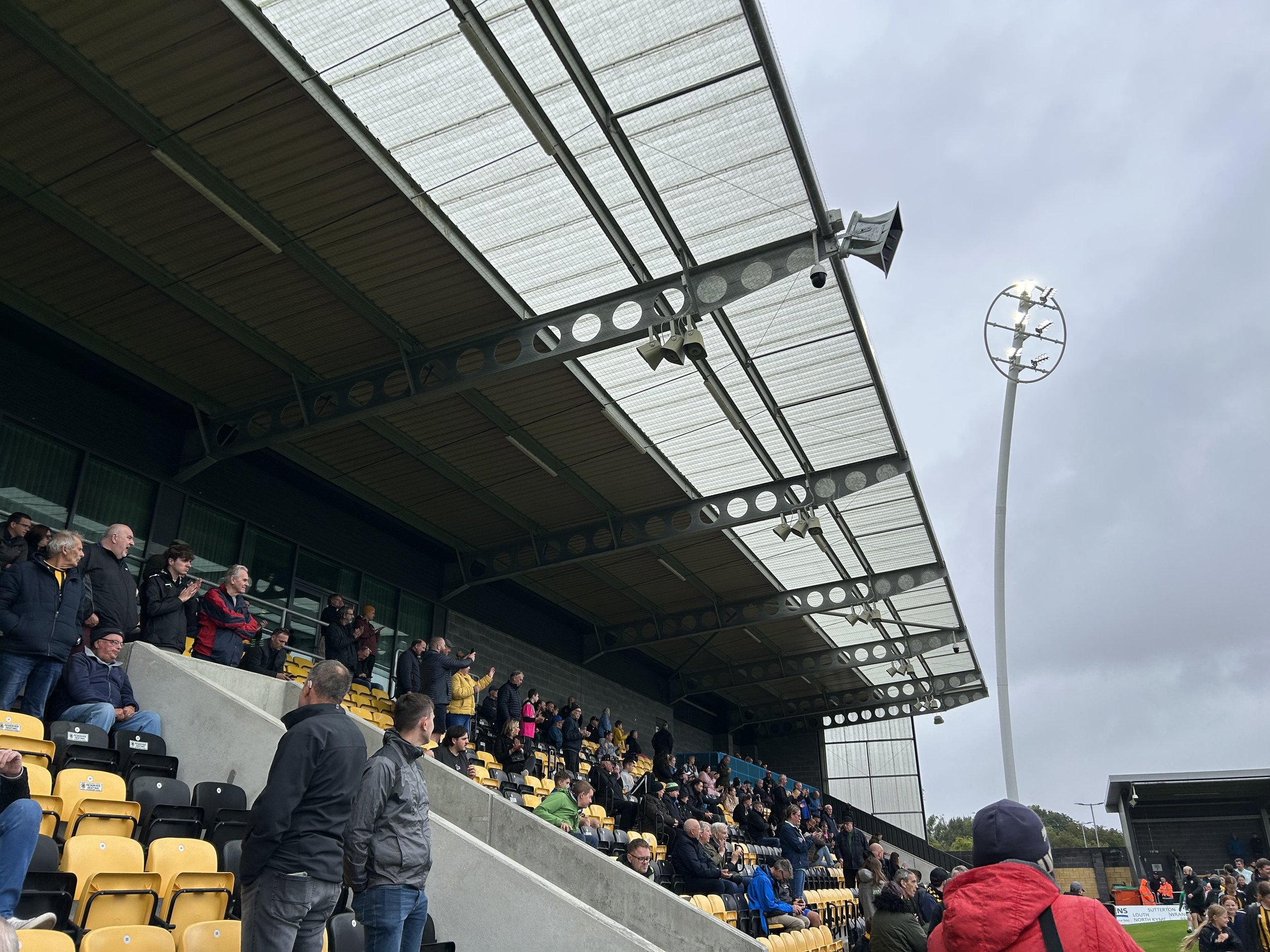
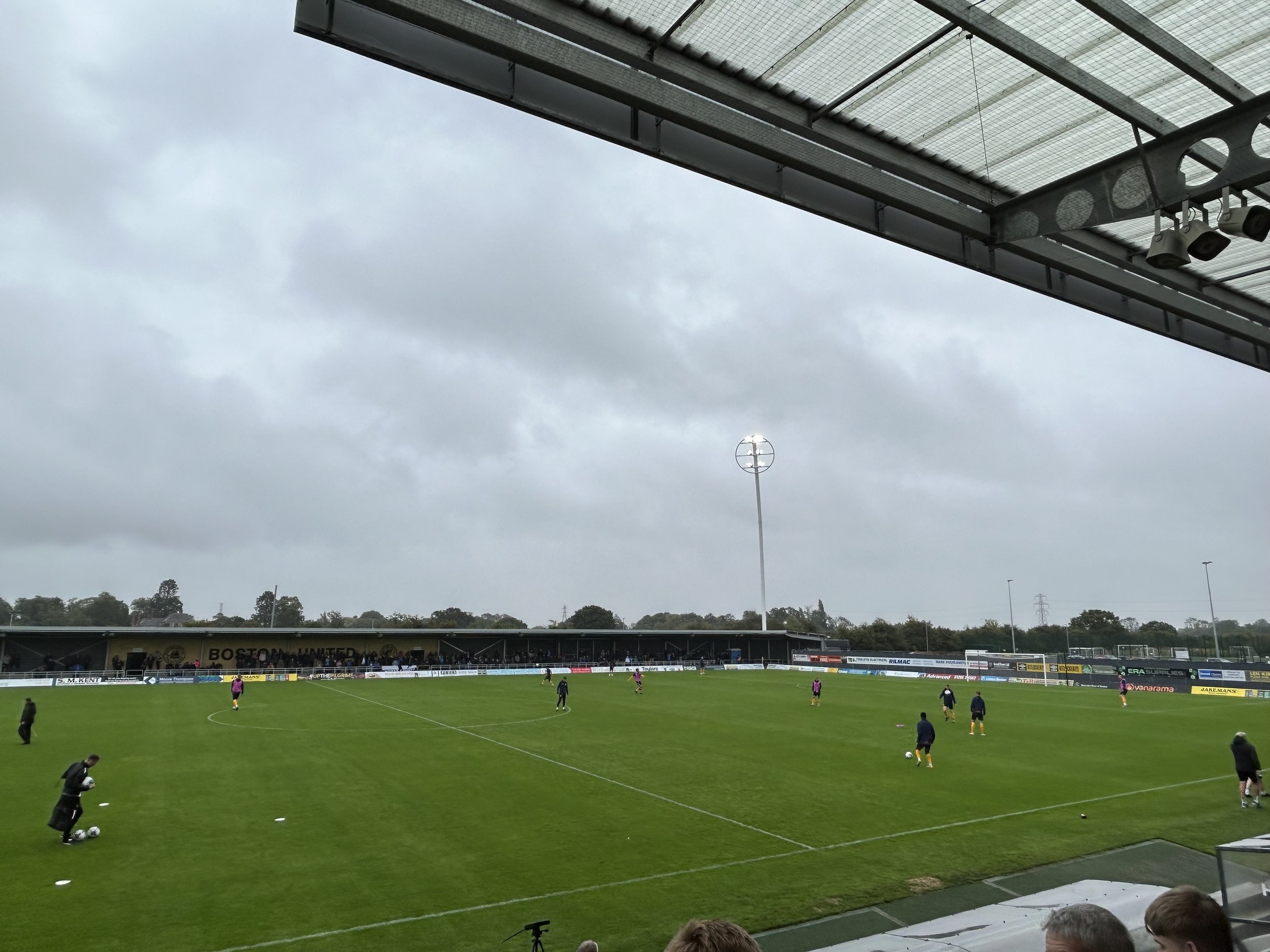
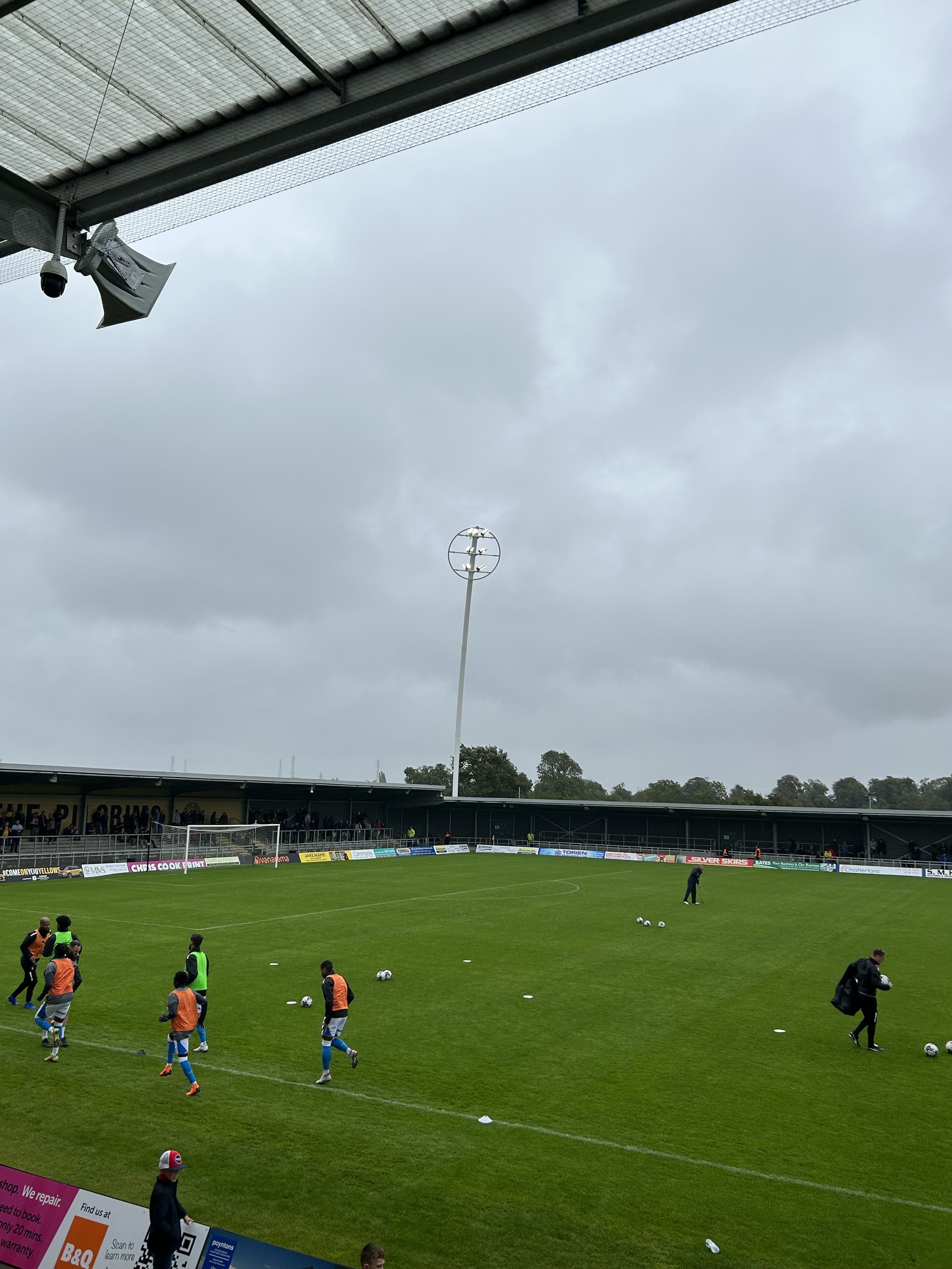
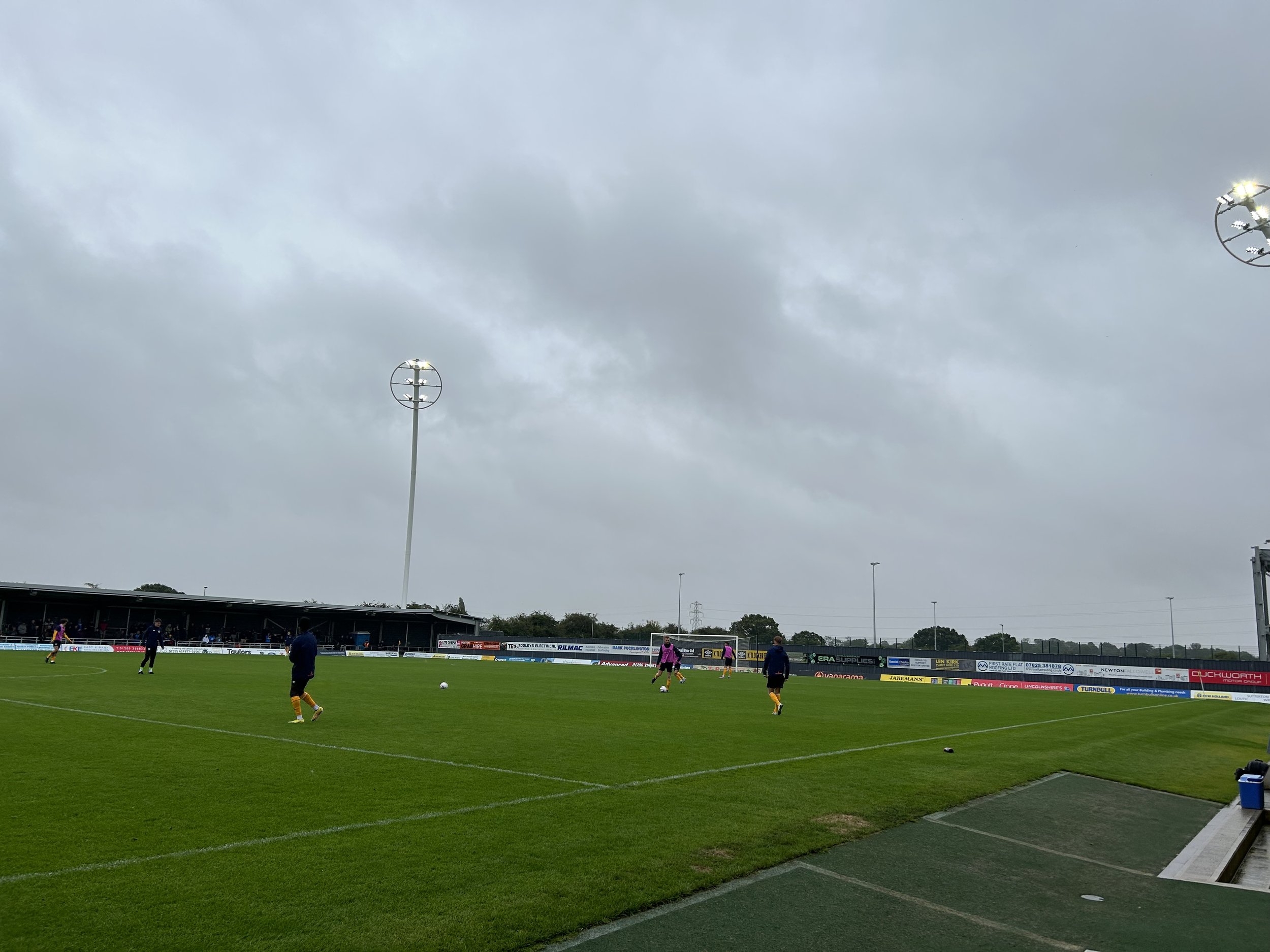
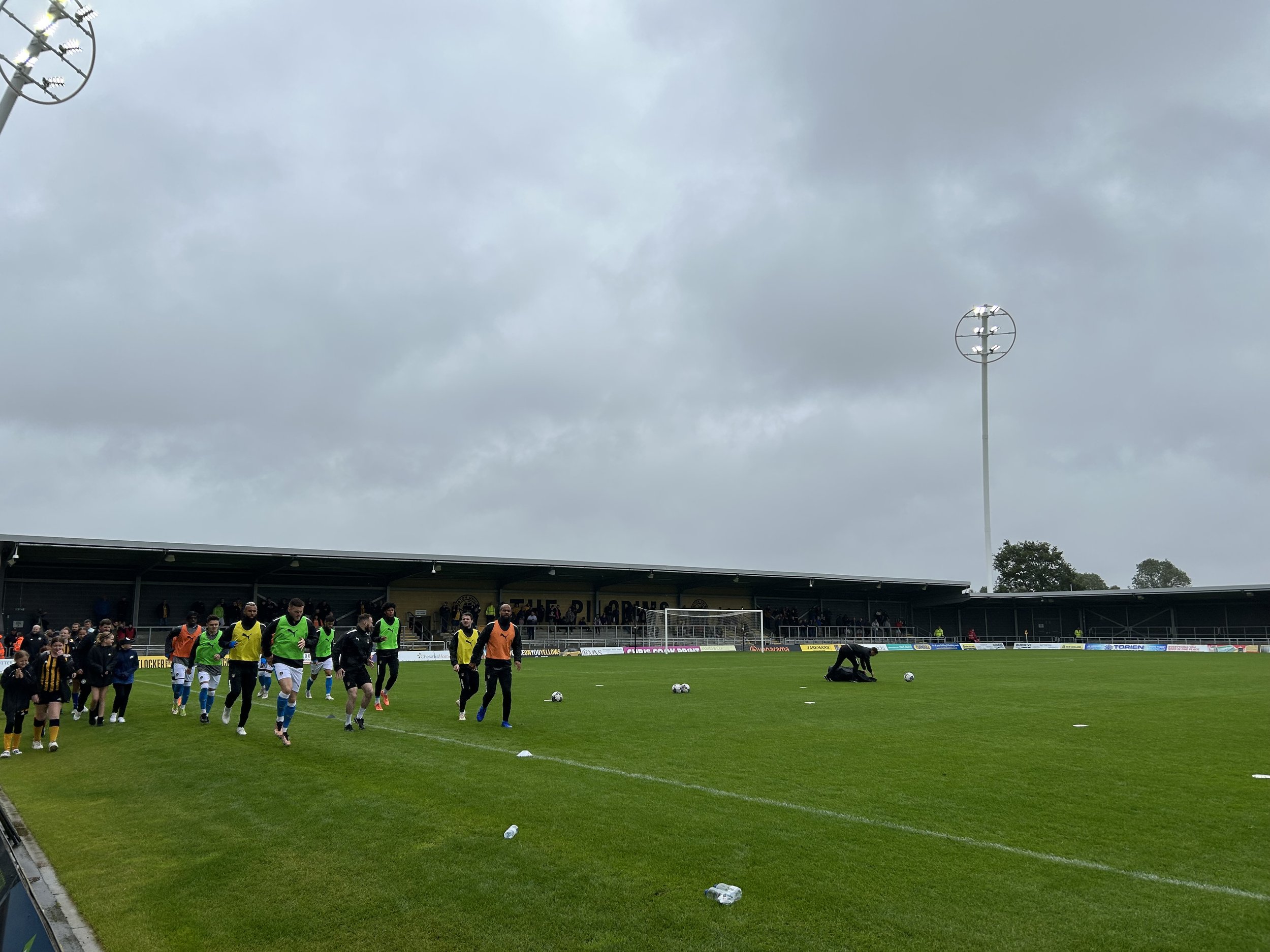
The setup inside the ground is very nice, too. The concourse in the Main Stand is well presented, if not particularly spacious. The half time queues for the bar snaked through the concourse even with a massively reduced attendance in comparison to league games.
There is no doubt that Boston have a tremendous set up on the outskirts of town, but it is the location that leaves me massively frustrated. One of the charming features of York Street is that it was incredibly central to the town. The floodlights of the old ground still dominate the Lincolnshire skyline along with the Stump and the Pilgrim Hospital. These modern facilities are to be admired, but I wish the whole place could be picked up and placed in a suitable location a couple of miles further north.
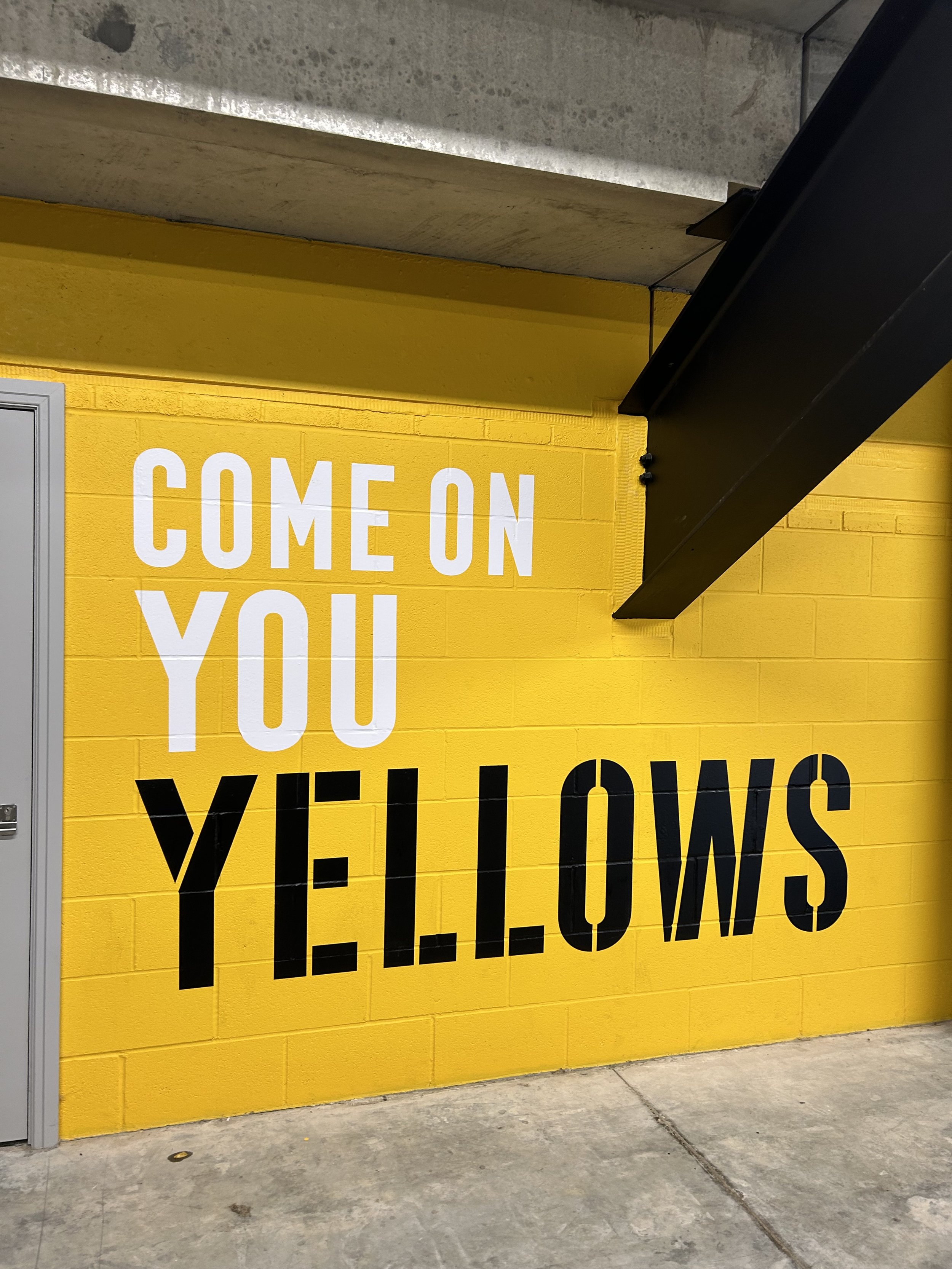
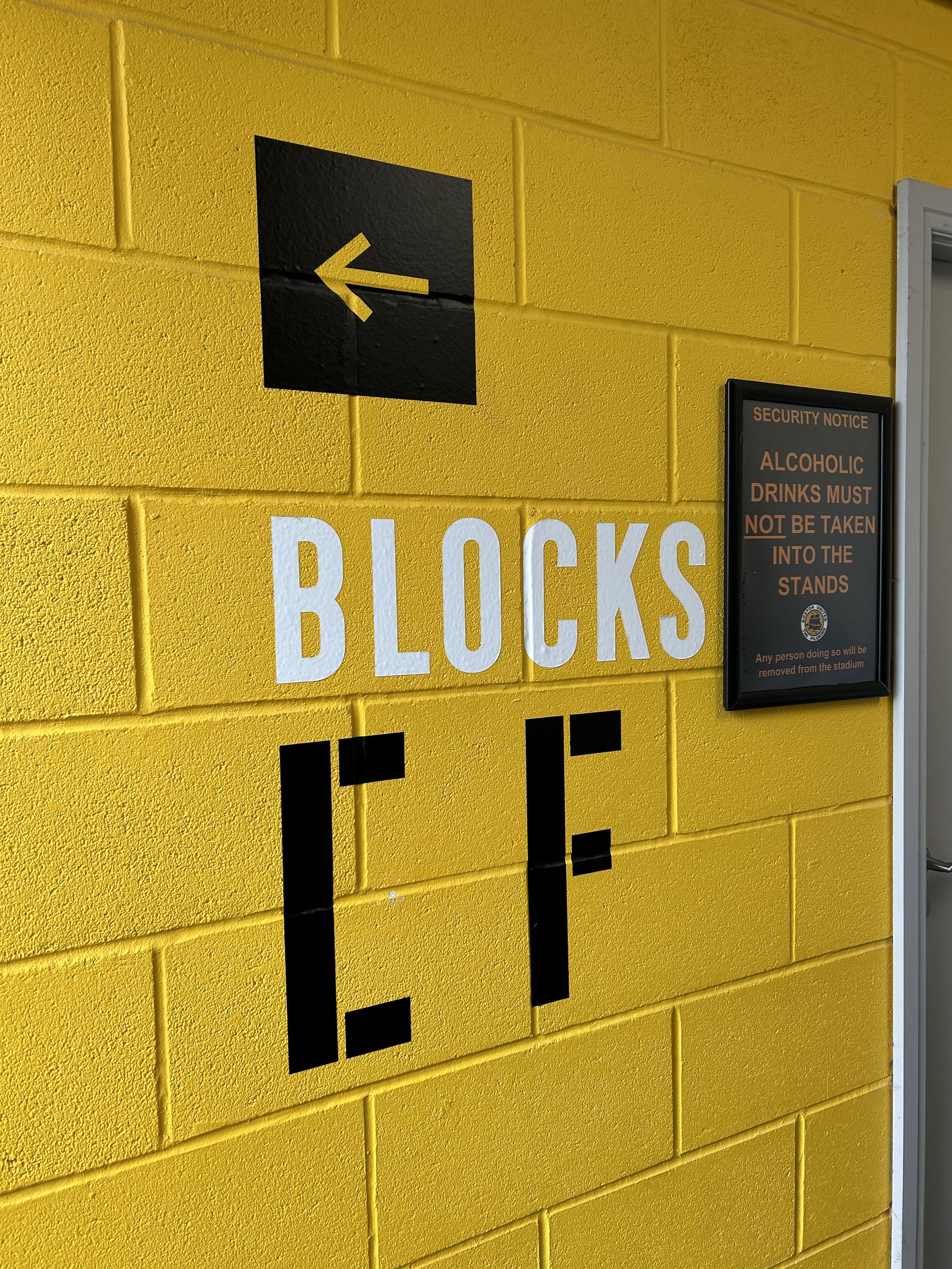
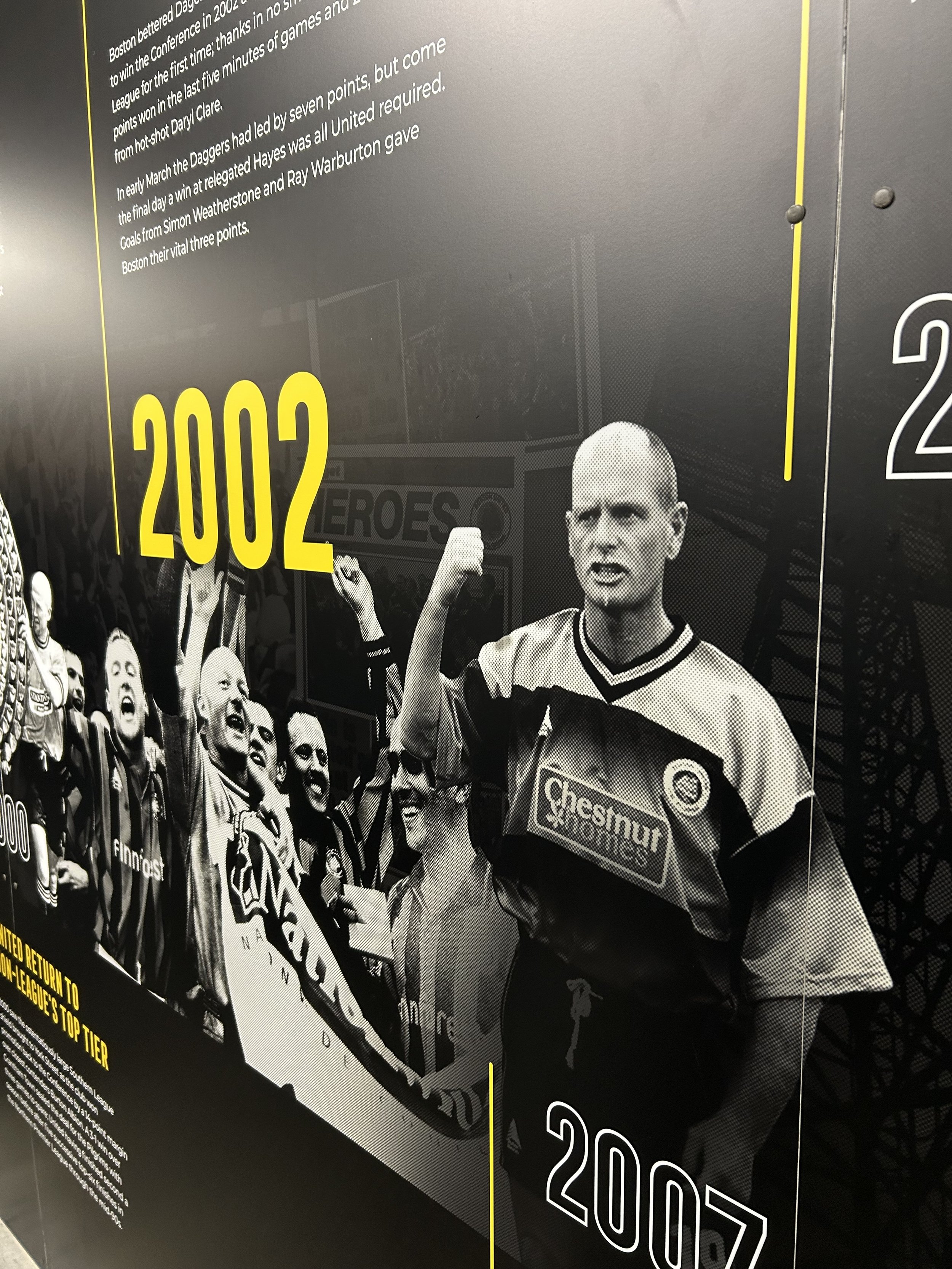
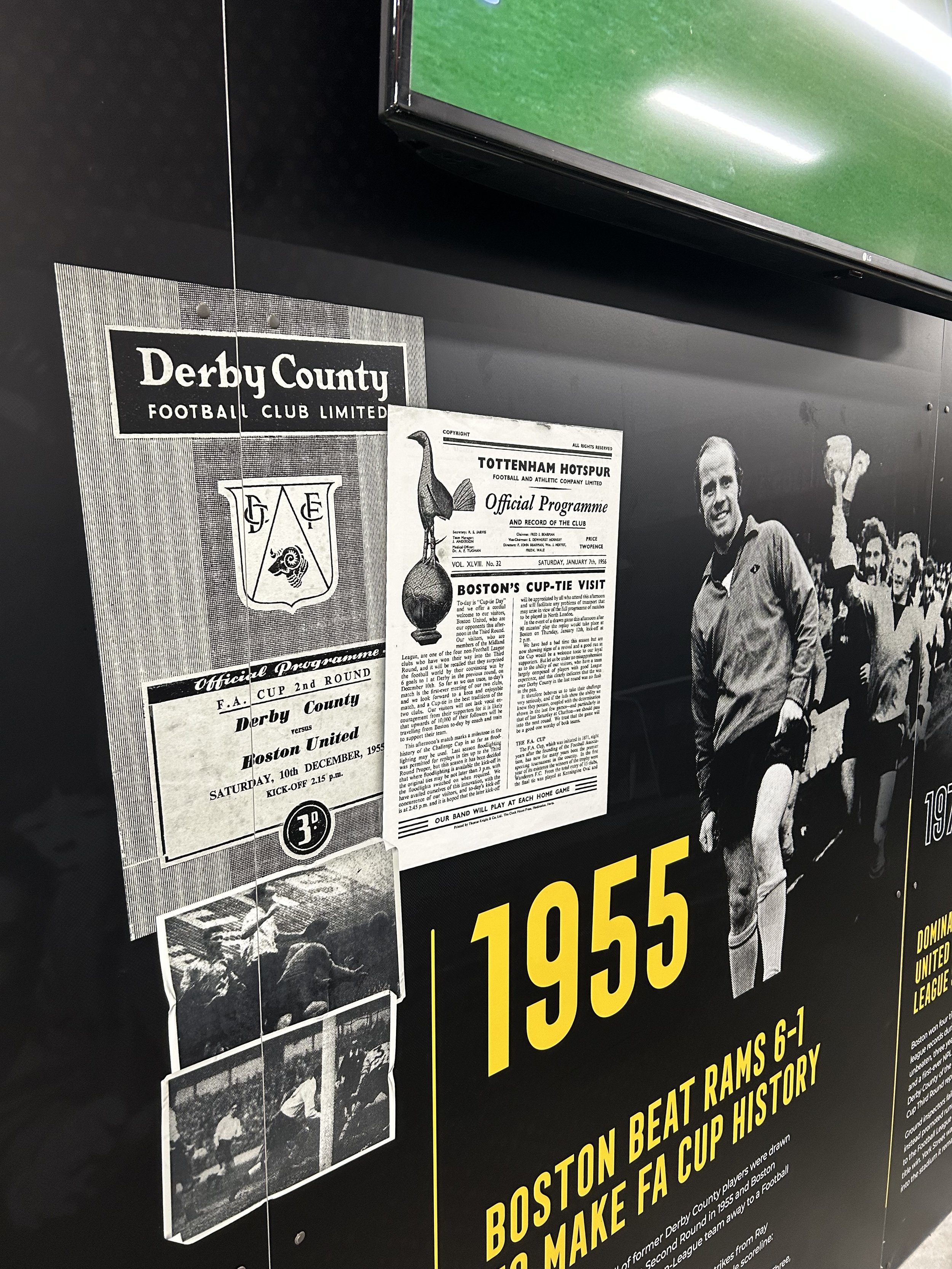
Jakemans Community Stadium Experience
Boston United earn two massive ticks from me thanks to their commitment to two tangible joys that are slowly seeping out of the game. Of course I’m talking about the matchday programme and the physical match ticket. Both could be purchased from the ticket office; the ticket for £12, and the thin but effective programme for £1. In a time where clubs seem to be finding any excuse to cut down on printing, producing anything for a pre-season game should be applauded. The magazine featured squad lists for each of United’s pre-season opponents, as well as written contributions from the manager and chairman.
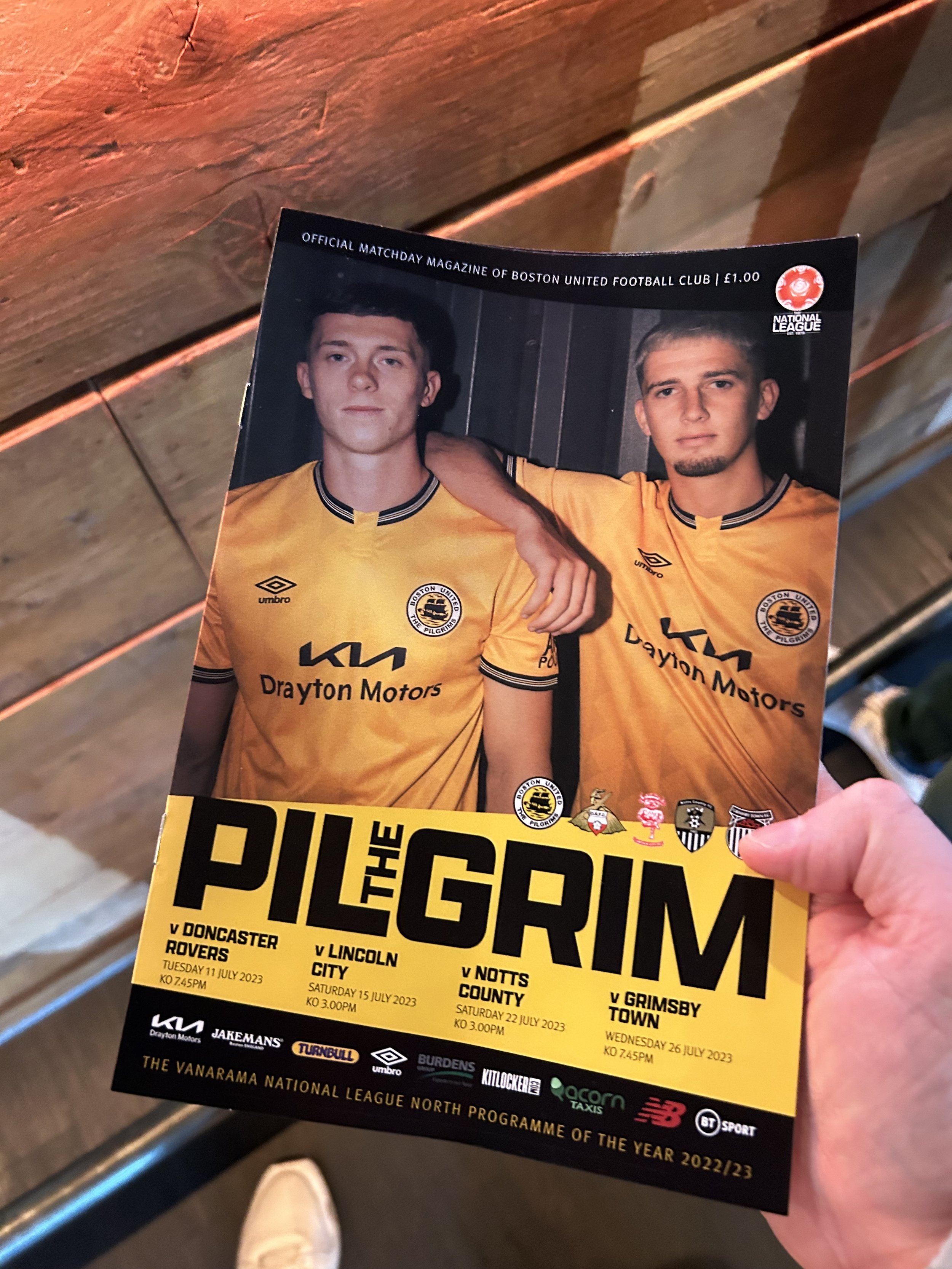
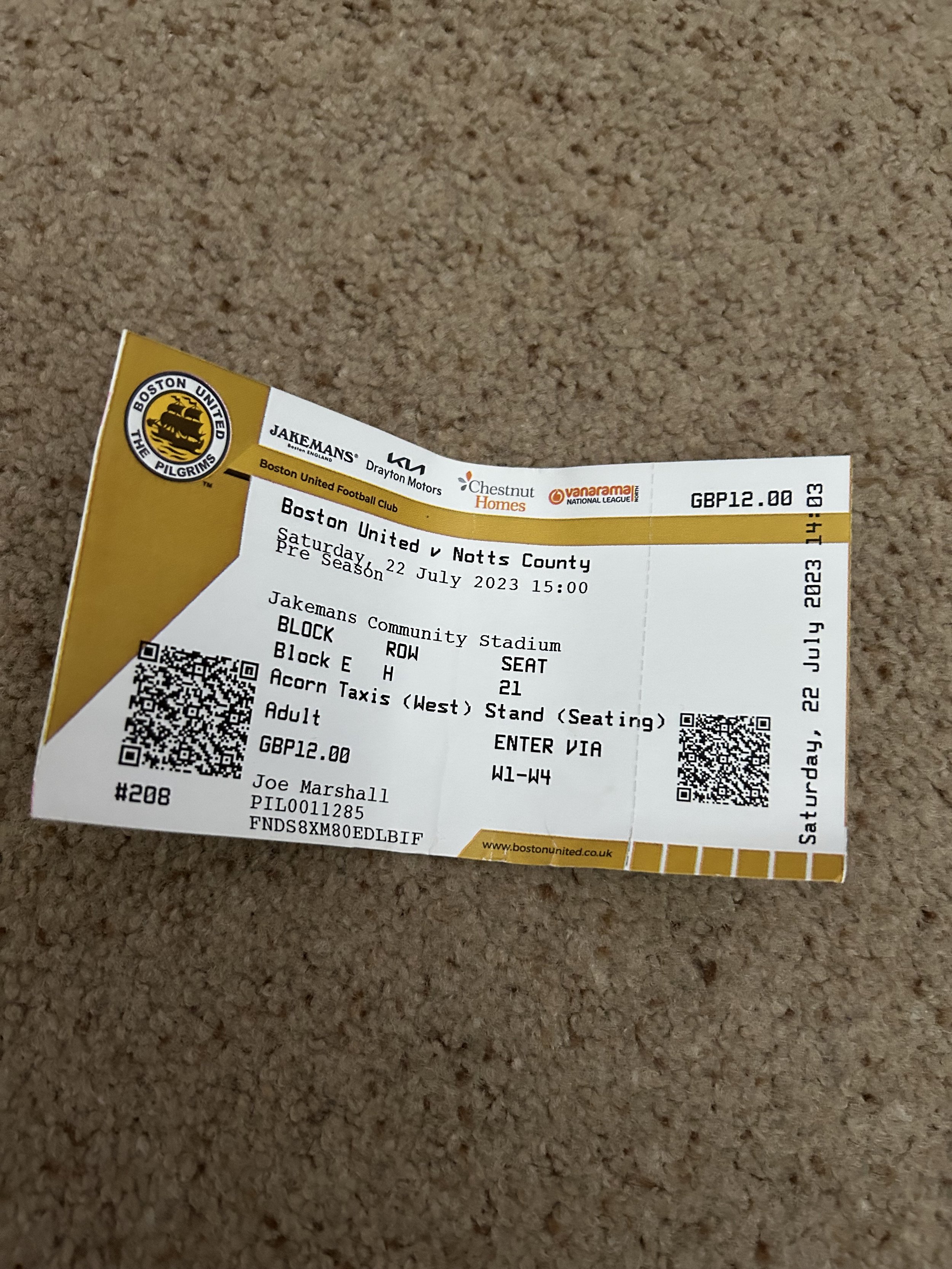
The greatest part of the pre-match experience is the mightily impressive Ellender’s Bar. Named after former Pilgrims captain and club legend Paul Ellender, the bar is classy and spacious, not at all in keeping with the expectations of a typical non-league clubhouse. Despite the lighting of a late night cocktail bar and the seating of a trendy upmarket café, Ellender’s still somehow maintains the atmosphere of a traditional football pub. This might have something to do with the pound-a-go Golden Goal seller as you enter and bar pumps adorned with names of familiar tipples. The prices were reasonable too; a pint of Madri and bottle of alcohol-free Peroni came in at around the £8 mark. The vibe inside Ellender’s is excellent and the bar is a real asset to the ground.
However, the quality of Ellender’s merely shines further light on the fact that the stadium’s location is less than desirable. As spectacular as the bar is, it doesn’t make up for the fact that it is the only place close to the ground that fans can get a drink. The rural location means that Ellender’s has a monopoly on the drinking market, and may perhaps get a little overcrowded on busier matchdays.
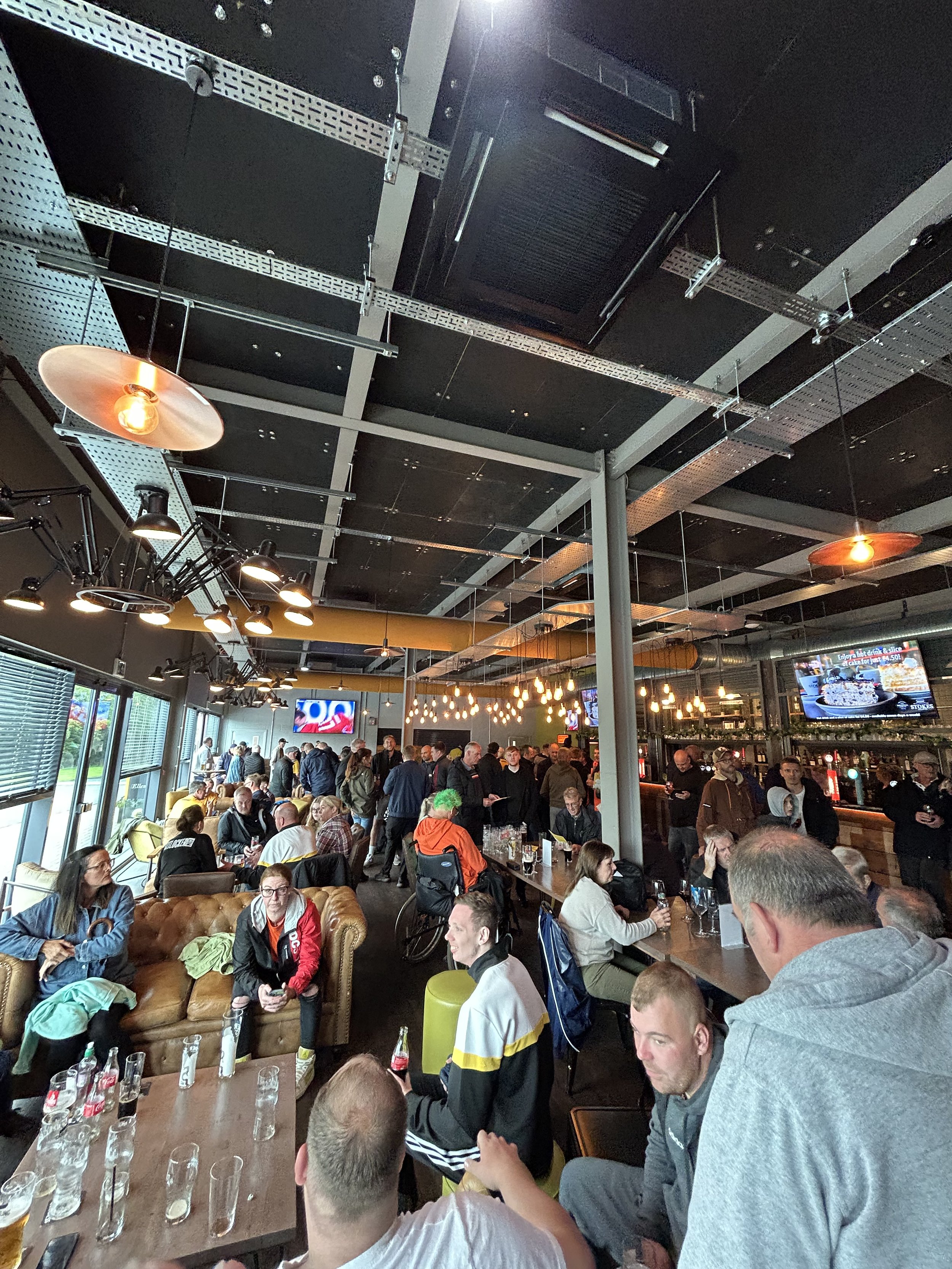
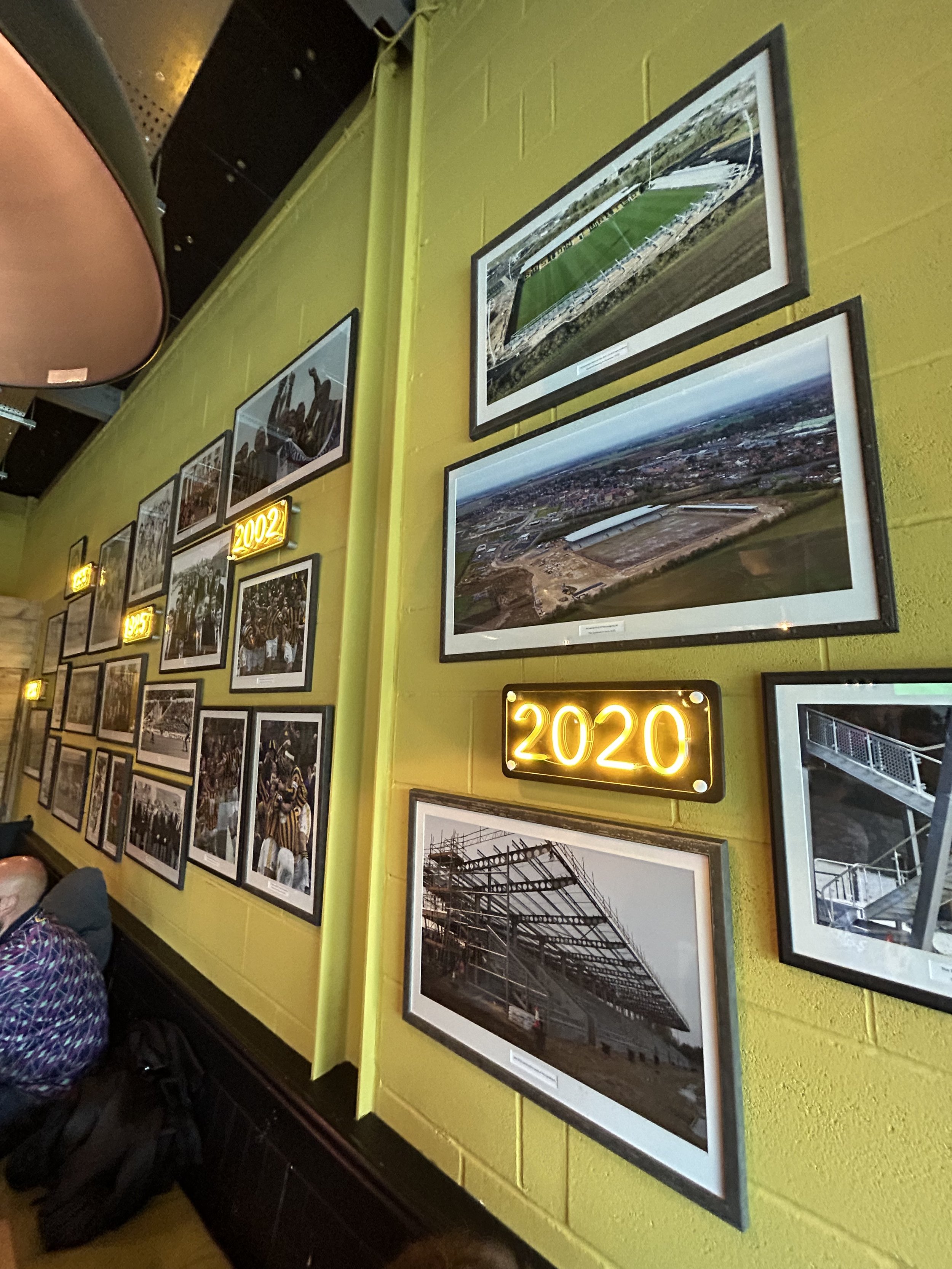
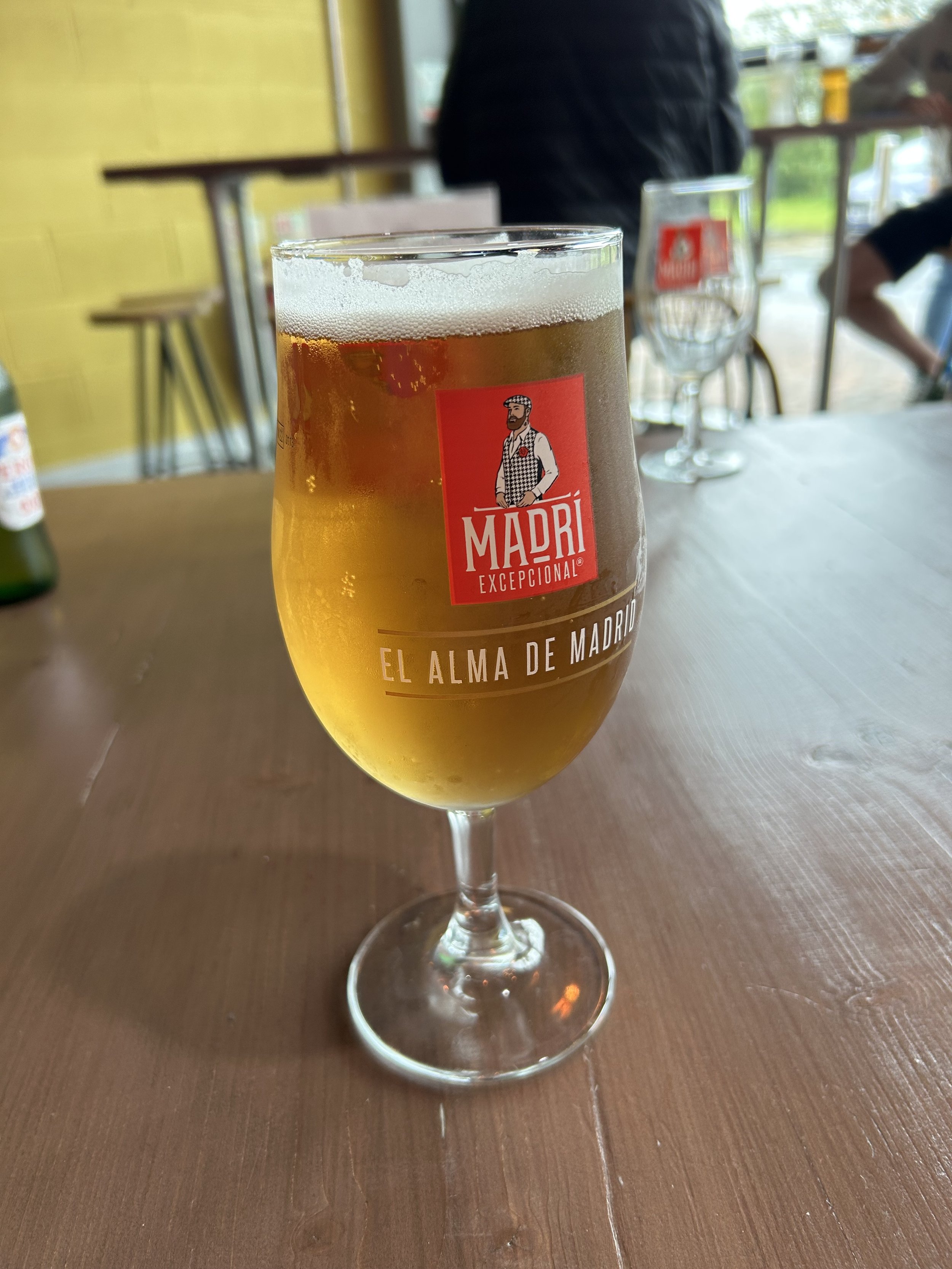
Once inside the ground, we had around 15 minutes to go until kick off, so there was time to stop for a bite to eat. I had a delicious steak pie with chips and gravy, costing £5. Despite the grandeur of the main stand’s exterior, inside the concourse you still feel like you are at an old-school football ground. The quality and value of the food are still firmly in keeping with what you’d expect at a non-league football, and I mean that as a compliment.
Boston United History
Boston United were formed in 1933, but football has been played in the town since the late 1800s. The team we now know as United were formed after the First World War, when another team, simply known as “Boston” went into liquidation at the end of the 1932-33 season. Boston United were able to take Boston FC’s place in the Midland League thanks to a group of Boston FC fans who led the formation of the new club and application into the league. They also continued to play on the site that eventually became York Street, known then as Shodfriars Lane.
Credit: Boston United FC
They spent the early part of their history in the Midland League, in which they struggled for success. However they were to set an FA Cup record in 1955 under the leadership of Ray Middleton. The Pilgrims were drawn away at Derby County and their 6-1 victory remains the largest away winning margin by a non-league club over league opposition. They also finished second in the Midland League, their best ever result.
Due to their tricky geographical location, Boston have found themselves shifted around various leagues throughout their history, spending time in the Northern and Southern Leagues after their stint in the Midlands. They found success in the Central Alliance in 1962, completing a league and cup double before financial problems forced them to briefly resign for a season in 1964. When they rejoined the non-league circuit a year later, they once again found themselves in a new league, this time taking part in the United Counties League. Unfazed by their new opposition, they completed another league and cup double. This success led them to one of the strangest moves yet, as the Pilgrims found themselves placed in the West Midlands League despite their east coast location (I wonder what Bishops Stortford would think of that!). Despite the travelling, they became a force in the West Midlands League, by winning the league in two consecutive seasons before guess what…they switched leagues again!
Credit: Boston Target
From 1968-1979, the club finally felt the benefits of a period of consistency, joining the newly formed Northern Premier League. Boston became a real force in the infancy of the competition, with four league titles, two league cups, four NPL Shields, and two non-league Champion of Champions trophies. It was a shame then that in 1977, their York Street home was deemed unsuitable for league football, and Wigan Athletic were elected to the fourth division instead.
Attention was now fully turned to off field matters with the stadium becoming thhe priority, therefore their period of relentless success slowly came to an end. Boston’s 11 year spell in the NPL ended with a move into the Alliance Premier, the newly formed top tier of non-league football. One of the club’s most memorable moments was their appearance in FA Trophy Final in 1984, where 12,000 Pilgrims fans witnessed a defeat to Wealdstone at Wembley. Despite not getting the ideal result, 5,000 people welcomed the team back to Boston the following day.
The FA Trophy finalists of 1984. Credit: www.bufc.drfox.org.uk
Boston were relegated from the Conference in 1993, and despite finishing runners up in the Northern Premier League two years later, an admin error prevented them gaining promotion. A turning point for the club came in 1998-99, when Steve Evans was appointed manager. He took the club back into the Conference the following season, and then into the Football League in 2002, after the decision was made to go full time.
Controversy followed, and Evans was banned from football for 20 months for FA charges relating to the registration of players. A four point penalty was also imposed at the start of the season, but reserve team manager Neil Thompson steered the Pilgrims to safety. The following season, Evans returned, and United finished in their best ever position; 11th. This achievement was matched in 2005-06, but the following season saw relegation and subsequent financial turmoil which resulted in the club going from League Two to the third tier of non-league in two seasons.
They were lifted out of this division via the playoffs in 2011, and began life in the second tier of non-league. During this spell, they have picked up somewhat of an unwanted reputation as a side that continue to fail in the playoffs, losing in the end of season competition five times in the intervening years. The Pilgrims moved into the Jakemans Community Stadium at the beginning of the 2021-22 season, after two curtailed seasons, thanks to you know what.
Boston lose out to York City in the National League North promotion final. Credit: The Yorkshire Post.
The Game
From the off, the game was evidently never going to be a classic, largely thanks to the foul weather. Notts County demonstrated their loftier position in the pyramid from the first minute, their ability to keep possession at a canter was an obvious marker of their superior quality and composure on the ball.
Despite creating very little in terms of clear cut chances, the visitors spent most of the first half camped inside the Boston half, sustaining pressure by keeping the ball well. Jodi Jones looked lively on the left hand side, and delivered a couple of brilliant crosses that cried out for someone to get on the end of.
Boston carried little threat, and on the few occasions they tried to break, they found themselves let down by their inability to release the ball at the right time or choose the right pass. It was a frustrating first half for one or two vocal Pilgrims fans behind us, who were starting to get audibly annoyed.
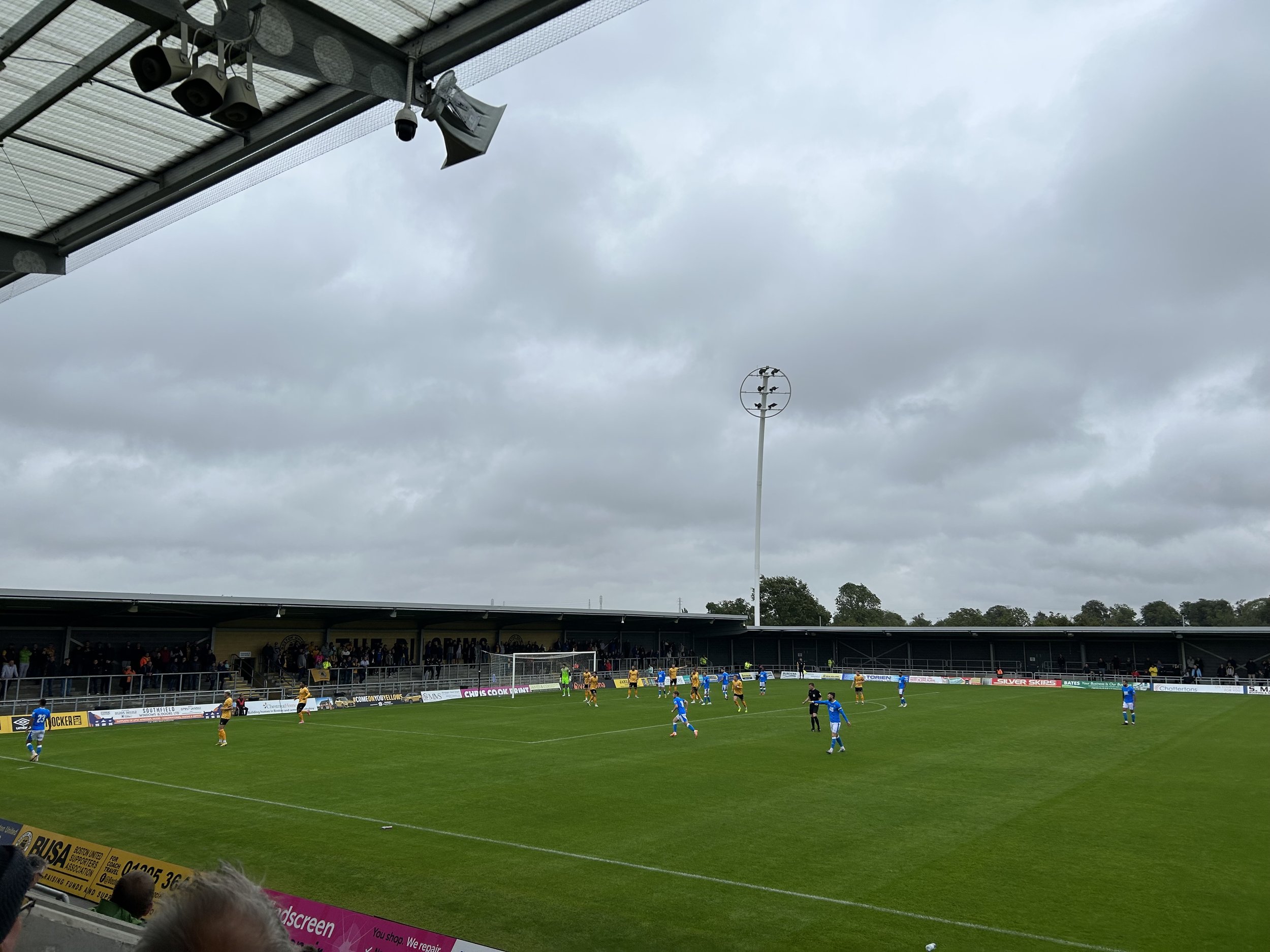
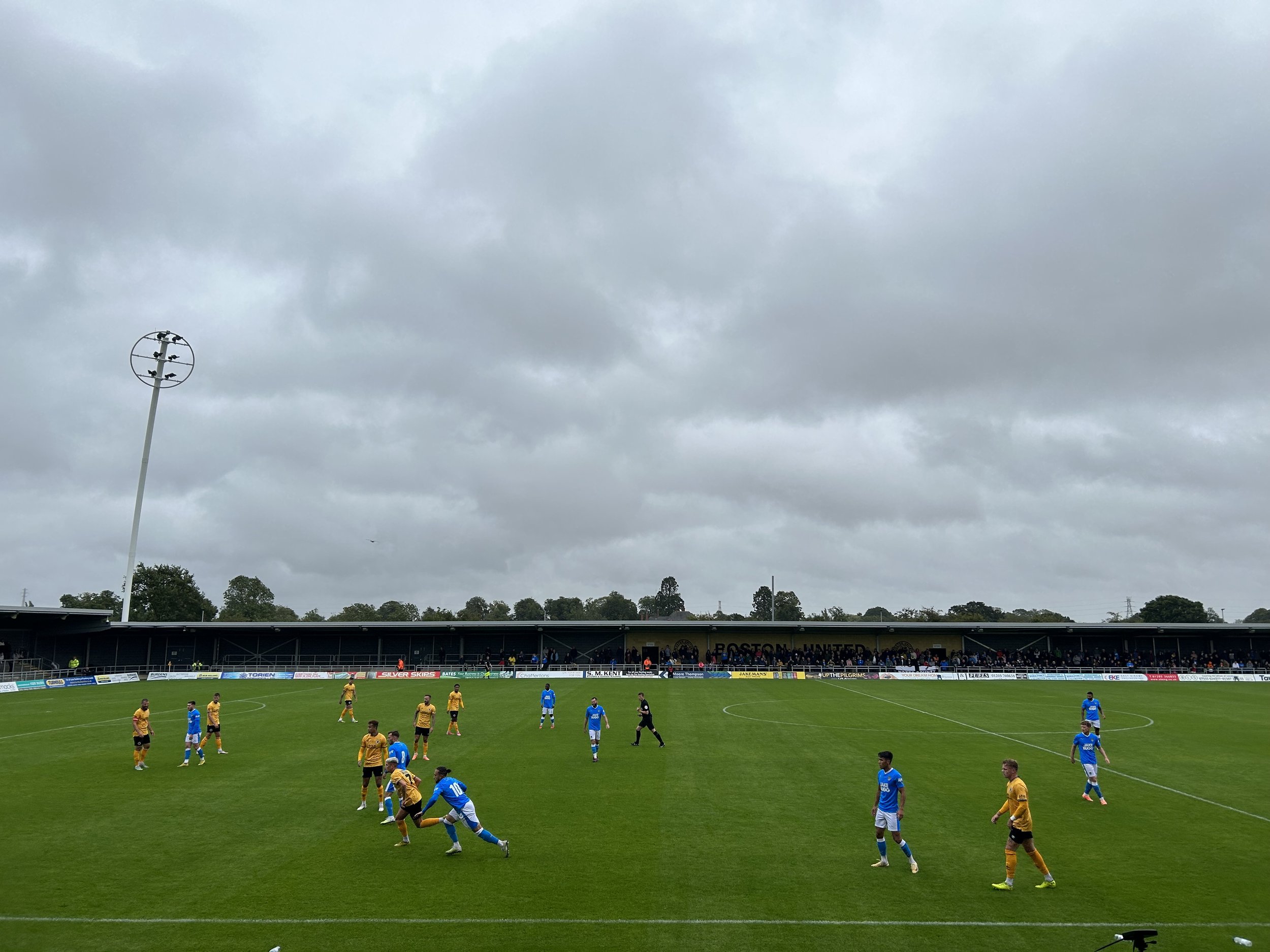
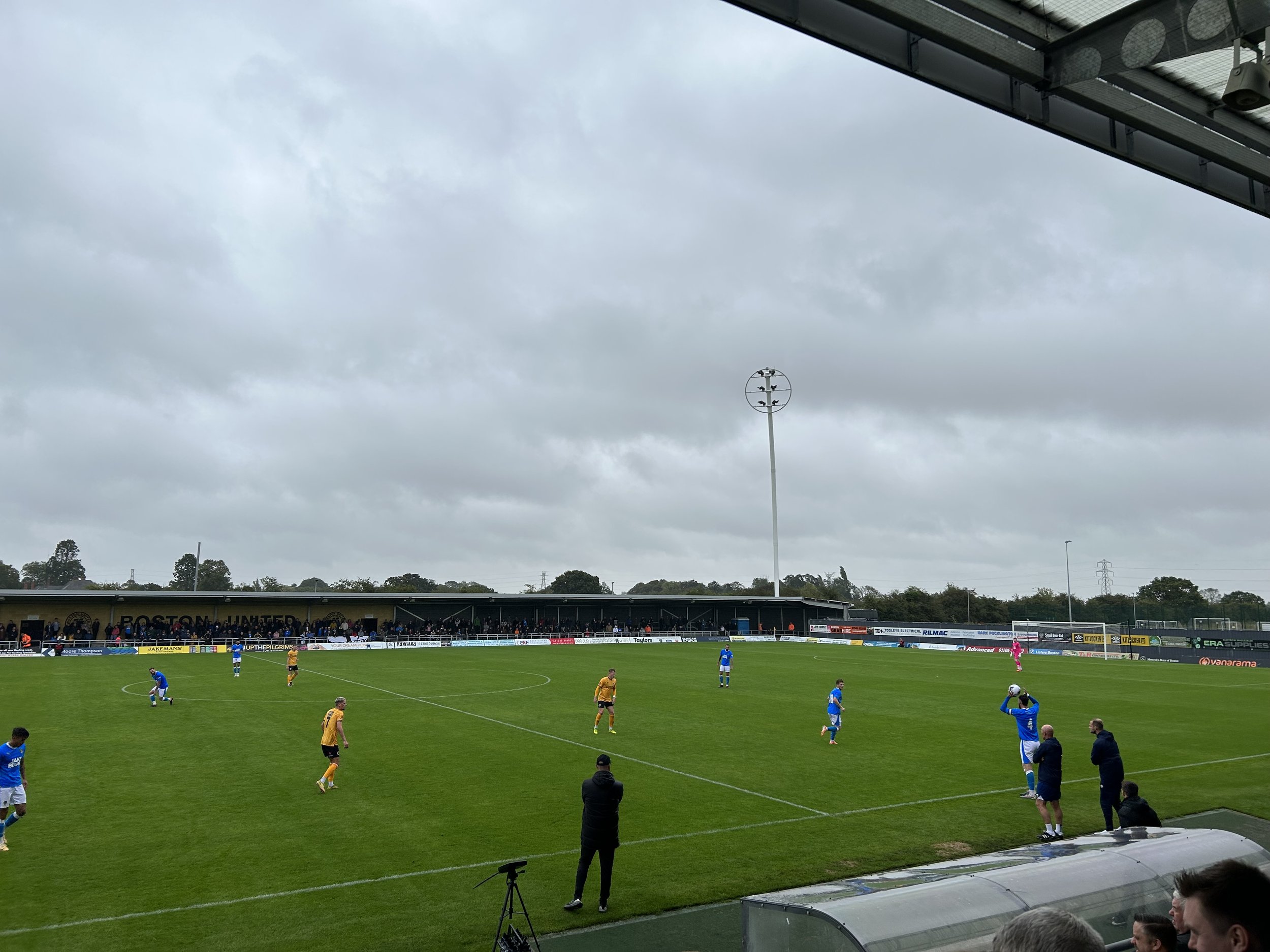

Despite the Magpies controlling possession, they were unable to find a breakthrough before half time, which meant the score was 0-0 when the players headed back into the tunnel.
During the half time break, the rain began to fall at a much heavier rate, and this set the scene for a wet, slippery and at times conspicuously aggressive second period.
The second half followed a much similar pattern to the first in terms of the visitors greater ability to maintain possession. Their consistently patient build up was eventually reward when Jim O’Brien squared for Cedwyn Scott to tap home at the far post.
Boston played their best football of the game in the closing minutes, but rarely looked like troubling Aidan Stone in the Magpies net. County made a raft of changes in the final 20 minutes which included last season’s top scorer Macaulay Langstaff, midfield star John Bostock and new marquee signing David McGoldrick take to the field.
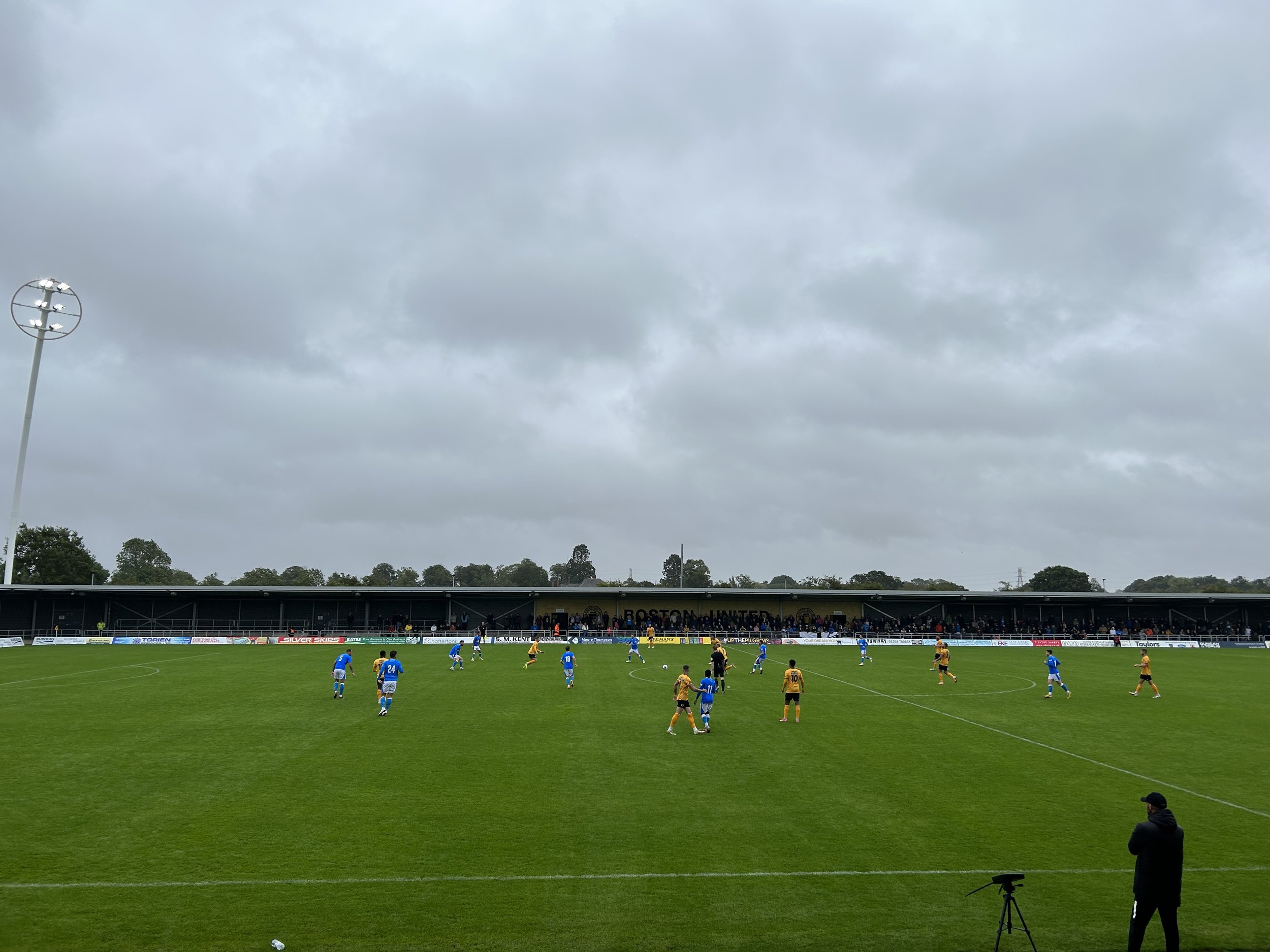
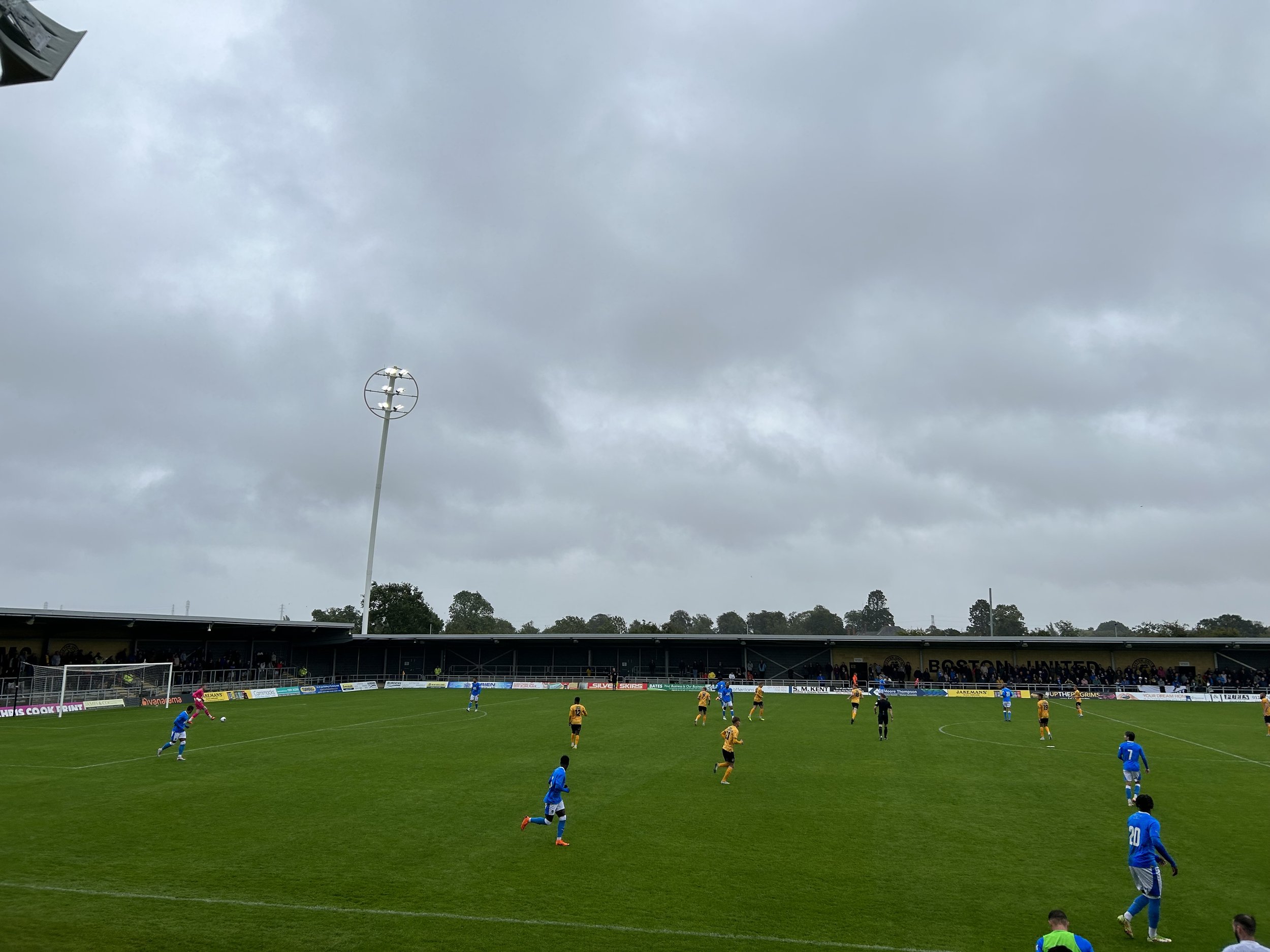

None of these star names made too much of an impact however, and Scott’s earlier goal was enough to separate the teams. The game got a little heated towards the end (for a friendly, at least) but the referee did well to manage it and avoid dishing out yellow cards at the rate he perhaps would’ve done if it was a league fixture.
Final score: Boston United 0-1 Notts County
Admission: £12
Programme: £1
Attendance: 1042








